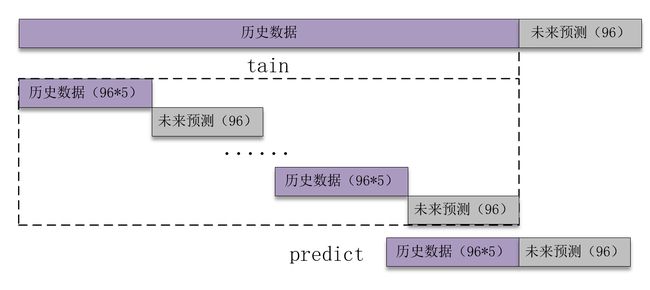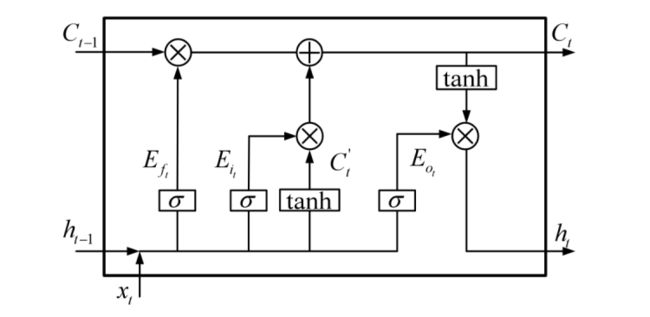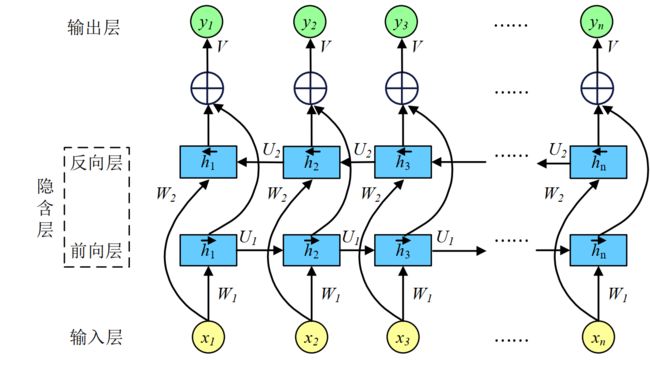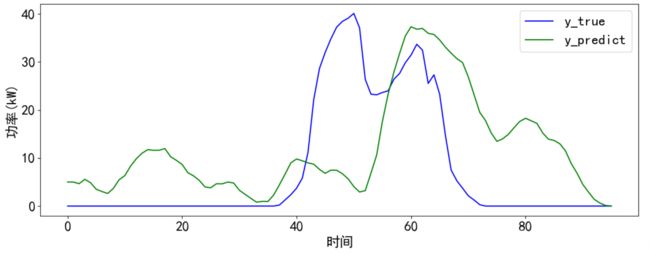时间序列预测 — BiLSTM实现多变量多步光伏预测(Tensorflow)
目录
1 数据处理
1.1 导入库文件
1.2 导入数据集
1.3 缺失值分析
2 构造训练数据
3 模型训练
3.1 BiLSTM网络
3.2 模型训练
4 模型预测
1 数据处理
1.1 导入库文件
import time
import datetime
import pandas as pd
import numpy as np
import matplotlib.pyplot as plt
from sampen import sampen2 # sampen库用于计算样本熵
from vmdpy import VMD # VMD分解库
import tensorflow as tf
from sklearn.cluster import KMeans
from sklearn.metrics import r2_score, mean_squared_error, mean_absolute_error, mean_absolute_percentage_error
from sklearn.preprocessing import MinMaxScaler
from tensorflow.keras.models import Sequential
from tensorflow.keras.layers import Dense, Activation, Dropout, LSTM, GRU
from tensorflow.keras.callbacks import ReduceLROnPlateau, EarlyStopping
# 忽略警告信息
import warnings
warnings.filterwarnings('ignore') 1.2 导入数据集
实验数据集采用数据集8:新疆光伏风电数据集(下载链接),数据集包括组件温度(℃) 、温度(°) 气压(hPa)、湿度(%)、总辐射(W/m2)、直射辐射(W/m2)、散射辐射(W/m2)、实际发电功率(mw)特征,时间间隔15min。对数据进行可视化:
# 导入数据
data_raw = pd.read_excel("E:\\课题\\08数据集\\新疆风电光伏数据\\光伏2019.xlsx")
data_rawfrom itertools import cycle
# 可视化数据
def visualize_data(data, row, col):
cycol = cycle('bgrcmk')
cols = list(data.columns)
fig, axes = plt.subplots(row, col, figsize=(16, 4))
fig.tight_layout()
if row == 1 and col == 1: # 处理只有1行1列的情况
axes = [axes] # 转换为列表,方便统一处理
for i, ax in enumerate(axes.flat):
if i < len(cols):
ax.plot(data.iloc[:,i], c=next(cycol))
ax.set_title(cols[i])
else:
ax.axis('off') # 如果数据列数小于子图数量,关闭多余的子图
plt.subplots_adjust(hspace=0.6)
plt.show()
visualize_data(data_raw.iloc[:,1:], 2, 4)![]()
单独查看部分功率数据,发现有较强的规律性。
![]()
因为只是单变量预测,只选取实际发电功率(mw)数据进行实验:
1.3 缺失值分析
首先查看数据的信息,发现并没有缺失值
data_raw.info()![]()
进一步统计缺失值
data_raw.isnull().sum()![]()
2 构造训练数据
构造训练数据,也是真正预测未来的关键。首先设置预测的timesteps时间步、predict_steps预测的步长(预测的步长应该比总的预测步长小),length总的预测步长,参数可以根据需要更改。
timesteps = 96*5 #构造x,为96*5个数据,表示每次用前96*5个数据作为一段
predict_steps = 96 #构造y,为96个数据,表示用后96个数据作为一段
length = 96 #预测多步,预测96个数据
feature_num = 7 #特征的数量通过前5天的timesteps数据预测后一天的数据predict_steps个,需要对数据集进行滚动划分(也就是前timesteps行的特征和后predict_steps行的标签训练,后面预测时就可通过timesteps行特征预测未来的predict_steps个标签)。因为是多变量,特征和标签分开划分,不然后面归一化会有信息泄露的问题。
# 构造数据集,用于真正预测未来数据
# 整体的思路也就是,前面通过前timesteps个数据训练后面的predict_steps个未来数据
# 预测时取出前timesteps个数据预测未来的predict_steps个未来数据。
def create_dataset(datasetx,datasety,timesteps=36,predict_size=6):
datax=[]#构造x
datay=[]#构造y
for each in range(len(datasetx)-timesteps - predict_steps):
x = datasetx[each:each+timesteps]
y = datasety[each+timesteps:each+timesteps+predict_steps]
datax.append(x)
datay.append(y)
return datax, datay![]()
数据处理前,需要对数据进行归一化,按照上面的方法划分数据,这里返回划分的数据和归一化模型,函数的定义如下:
# 数据归一化操作
def data_scaler(datax,datay):
# 数据归一化操作
scaler1 = MinMaxScaler(feature_range=(0,1))
scaler2 = MinMaxScaler(feature_range=(0,1))
datax = scaler1.fit_transform(datax)
datay = scaler2.fit_transform(datay)
# 用前面的数据进行训练,留最后的数据进行预测
trainx, trainy = create_dataset(datax[:-timesteps-predict_steps,:],datay[:-timesteps-predict_steps,0],timesteps, predict_steps)
trainx = np.array(trainx)
trainy = np.array(trainy)
return trainx, trainy, scaler1, scaler2然后对数据按照上面的函数进行划分和归一化。通过前5天的96*5数据预测后一天的数据96个,需要对数据集进行滚动划分(也就是前96*5行的特征和后96行的标签训练,后面预测时就可通过96*5行特征预测未来的96个标签)
datax = df_vmd[:,:-1]
datay = df_vmd[:,-1].reshape(df_vmd.shape[0],1)
trainx, trainy, scaler1, scaler2 = data_scaler(datax, datay)3 模型训练
3.1 BiLSTM网络
长短期记忆神经网络(Long Short-Term Memory, LSTM) 是一种时间循环神经网络,是为
了解决一般的RNN存在的长期依赖问题而专门设计出来的,所有的RNN都具有一种重复神经
网络模块的链式形式。在标准RNN中,这个重复的结构模块只有一个非常简单的结构,例如一
个tanh层。 LSTM神经网络采用门控机制替换了循环神经网络简单的隐含层神经元, 可以解决长
期依赖的问题,在处理时序问题上表现出色。
LSTM 神经网络
传统的 LSTM 网络只能根据历史状态向前编码,无法考虑反向序列的影响。而电力负荷数
据变化与时间发展密切相关,未来数据通常与过去数据相似, 为了更全面、准确地预测,需要
考虑反向序列的影响。 双向长短期记忆神经网络(Bi-directional Long Short-Term Memory,
BiLSTM) 引入了双向计算的思想,它可以实现基于原始的 LSTM 网络同时进行正向和反向计
算, 可以同时提取前向和后向信息,更好地挖掘负荷数据的时序特征,进一步提高预测模型精度。
BiLSTM 神经网络
可以通过Bidirectional()来构建一个BiLSTM模型并进行训练的过程,实现主体代码如下:
model.add(Bidirectional(LSTM(units=50, return_sequences=True), input_shape=(timesteps, feature_num)))
model.add(Bidirectional(LSTM(units=100, return_sequences=True), input_shape=(timesteps, feature_num)))
model.add(Bidirectional(LSTM(units=150)))units=50:表示LSTM层中有50个神经元return_sequences=True:表示该层返回整个序列而不仅仅是输出序列的最后一个input_shape=(timesteps, feature_num):表示输入数据的形状为(timesteps, feature_num),这里timesteps和feature_num是预先定义好的输入数据的时间步数和特征数。
第一行代码向模型中再次添加了一个双向的LSTM层,使用了units=50个神经元。
第二行代码向模型中再次添加了一个双向的LSTM层,与上一行类似,但这次使用了units=100个神经元。
第三行代码向模型中添加了另一个双向的LSTM层,这次没有设置return_sequences=True,表示该层不返回整个序列,而是只返回输出序列的最后一个值。
3.2 模型训练
首先搭建模型的常规操作,然后使用训练数据trainx和trainy进行训练,进行50个epochs的训练,每个batch包含64个样本。此时input_shape划分数据集时每个x的形状。(建议使用GPU进行训练,因为本人电脑性能有限,建议增加epochs值;也可以依次增加LSTM网络中units)
# # 创建BiLSTM模型
def BiLSTM_model_train(trainx, trainy):
# 调用GPU加速
gpus = tf.config.experimental.list_physical_devices(device_type='GPU')
for gpu in gpus:
tf.config.experimental.set_memory_growth(gpu, True)
# BiLSTM网络构建
start_time = datetime.datetime.now()
model = Sequential()
model.add(Bidirectional(LSTM(units=50, return_sequences=True), input_shape=(timesteps, feature_num)))
model.add(Bidirectional(LSTM(units=100, return_sequences=True), input_shape=(timesteps, feature_num)))
model.add(Bidirectional(LSTM(units=150)))
model.add(Dropout(0.1))
model.add(Dense(predict_steps))
model.compile(loss='mse', optimizer='adam')
# 模型训练
model.fit(trainx, trainy, epochs=50, batch_size=64)
end_time = datetime.datetime.now()
running_time = end_time - start_time
# 保存模型
model.save('BiLSTM_model.h5')
# 返回构建好的模型
return modelmodel = BiLSTM_model_train(trainx, trainy)4 模型预测
首先加载训练好后的模型
# 加载模型
from tensorflow.keras.models import load_model
model = load_model('BiLSTM_model.h5')准备好需要预测的数据,训练时保留了6天的数据,将前5天的数据作为输入预测,将预测的结果和最后一天的真实值进行比较。
y_true = datay[-timesteps-predict_steps:-timesteps]
x_pred = datax[-timesteps:]预测并计算误差,并进行可视化,将这些步骤封装为函数。
# 预测并计算误差和可视化
def predict_and_plot(x, y_true, model, scaler, timesteps):
# 变换输入x格式,适应LSTM模型
predict_x = np.reshape(x, (1, timesteps, feature_num))
# 预测
predict_y = model.predict(predict_x)
predict_y = scaler.inverse_transform(predict_y)
y_predict = []
y_predict.extend(predict_y[0])
# 计算误差
r2 = r2_score(y_true, y_predict)
rmse = mean_squared_error(y_true, y_predict, squared=False)
mae = mean_absolute_error(y_true, y_predict)
mape = mean_absolute_percentage_error(y_true, y_predict)
print("r2: %.2f\nrmse: %.2f\nmae: %.2f\nmape: %.2f" % (r2, rmse, mae, mape))
# 预测结果可视化
cycol = cycle('bgrcmk')
plt.figure(dpi=100, figsize=(14, 5))
plt.plot(y_true, c=next(cycol), markevery=5)
plt.plot(y_predict, c=next(cycol), markevery=5)
plt.legend(['y_true', 'y_predict'])
plt.xlabel('时间')
plt.ylabel('功率(kW)')
plt.show()
return y_predict
y_predict_nowork = predict_and_plot(x_pred, y_true, model, scaler2, timesteps)最后得到可视化结果,发下可视化结果并不是太好,可以通过调参和数据处理进一步提升模型预测效果。



